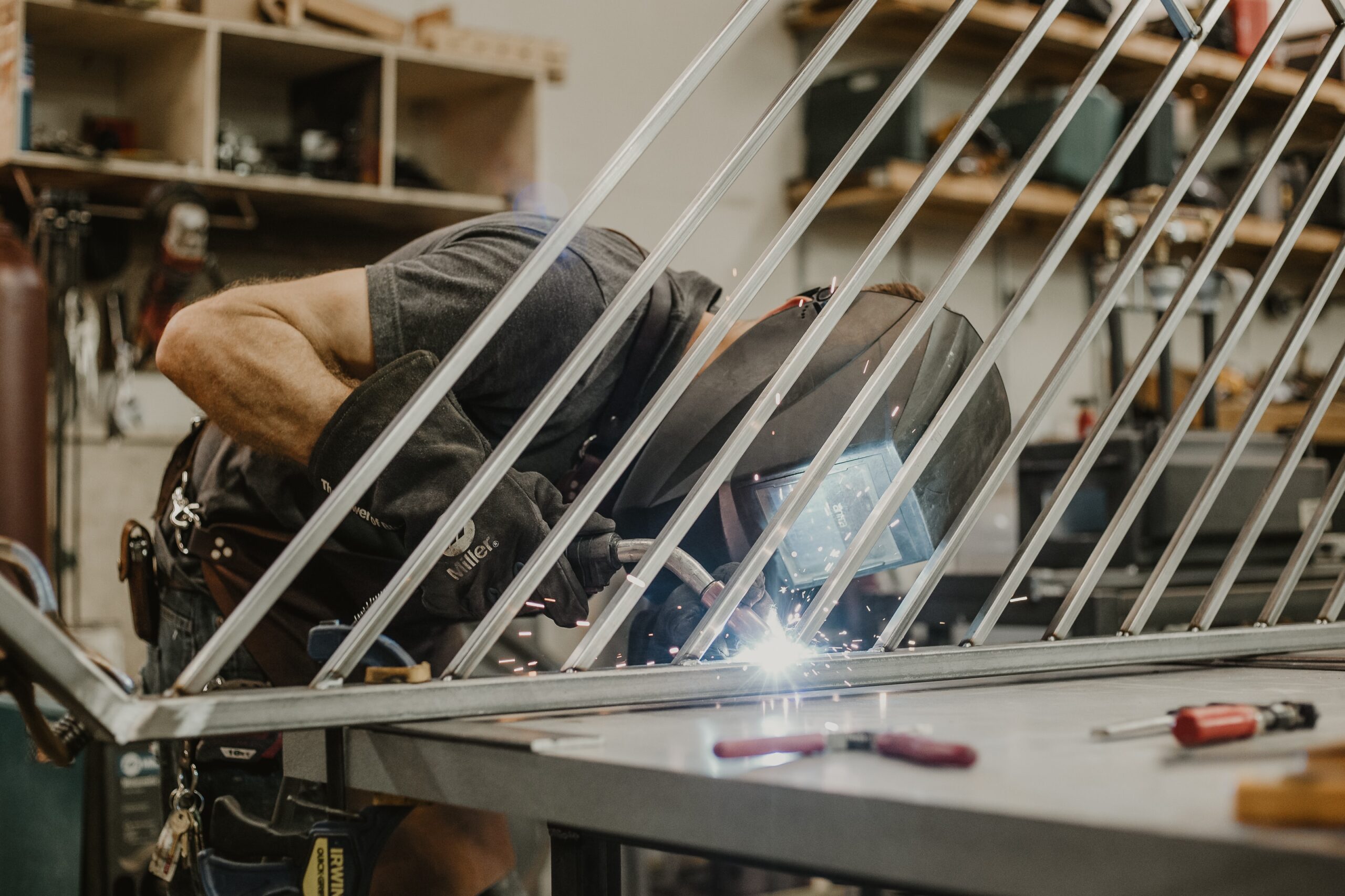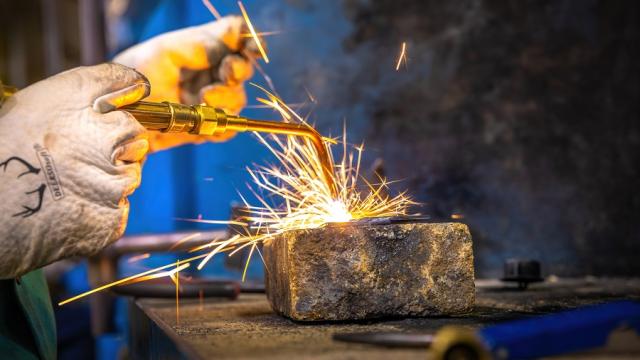All Regarding Welding: Key Insights Into Techniques and Best Practices for Success
Welding encompasses a selection of strategies, each fit for specific products and applications. Recognizing these methods, such as GMAW, SMAW, and TIG, is necessary for attaining excellent results. Furthermore, the best equipment and safety and security methods can not be neglected. As preparation and troubleshooting play crucial functions in the welding procedure, understanding these aspects can substantially enhance the high quality of the end product. What are the key variables that guarantee a successful weld?
Understanding Different Welding Strategies
Welding strategies incorporate a selection of methods, each fit to details applications and materials. Among one of the most usual methods are Gas Steel Arc Welding (GMAW), Shielded Metal Arc Welding (SMAW), and Tungsten Inert Gas Welding (TIG) GMAW, likewise called MIG welding, is preferred for its rate and flexibility, making it ideal for thin products. SMAW, or stick welding, is preferred for its simplicity and performance in outside environments, especially with thicker steels. TIG welding provides precision and control, making it suitable for detailed job and non-ferrous metals (Montana Mobile Welding and Repair Fabrication). Each technique has its unique benefits and considerations, allowing welders to choose the most effective method based upon the job's requirements, product type, and preferred results. Recognizing these strategies is vital for effective welding
Important Welding Equipment and Devices
While various welding methods need certain skills, the appropriate tools and devices are similarly crucial for achieving top quality outcomes. Necessary welding devices includes welding devices, which differ depending on the strategy-- such as MIG, TIG, or stick welding. Protective gear, consisting of gloves, aprons, and helmets, assurances safety and comfort during the process. Additionally, fixtures and clamps help safeguard products in location, guaranteeing accuracy in welds. Consumables like welding poles, wire, and securing gas are also vital components that affect the high quality of the weld. Tools such as mills and cutters promote surface prep work and post-weld completing, adding to an expert end result. Investing in top quality devices inevitably enhances the efficiency and performance of welding projects.
Safety And Security Practices in Welding
Correct safety and security practices are important in the welding industry to protect workers from possible risks. Welders must put on ideal individual protective equipment (PPE), including helmets with appropriate shading, handwear covers, and flame-resistant apparel. Ample air flow is essential to minimize exposure to dangerous fumes and gases generated throughout the welding procedure. Additionally, workers ought to be learnt the proper handling of welding tools to avoid mishaps. Fire precaution, such as maintaining combustible products far from the welding location and having fire extinguishers easily offered, are necessary. Regular evaluations of tools and workspaces can assist determine possible risks prior to they bring about crashes. By adhering to these safety techniques, welders can create a much safer working environment and decrease threats related to their profession.
Readying Materials for Welding
Preparing products for welding is a vital step that considerably affects the quality and integrity of the final product (Montana Mobile Welding and Repair Fabrication). Correct preparation involves cleaning up the surface areas to remove pollutants such as rust, oil, and dust, which can jeopardize the weld. Strategies such as grinding, fining sand, or making use of solvents are generally used to achieve a clean surface area. In addition, making sure that the materials fit with each other snugly is essential; gaps can cause weak welds. It's likewise crucial to take right into account the positioning and positioning of the parts, as this will impact the convenience of welding and the final result. Lastly, selecting the appropriate filler material and ensuring compatibility with the base metals is vital for attaining strong, resilient welds
Tips for Achieving High-Quality Welds
Achieving high-quality welds requires interest to detail and adherence to ideal practices throughout the welding procedure. Correct joint prep work is vital, guaranteeing surface areas are complimentary and tidy from contaminants. Choosing the ideal filler product and welding strategy based on the base steels is vital for ideal bonding. Keeping constant traveling rate and angle while welding can advertise and prevent defects uniformity. In addition, regulating heat input is important; too much warm can lead to bending and weakened joints. If necessary, routinely evaluating the welds water welding during the procedure permits for prompt modifications. Lastly, utilizing suitable post-weld therapies, such as cleaning and anxiety relief, can enhance the resilience and integrity of the weld, inevitably guaranteeing a successful result.
Repairing Common Welding Issues
Welding often provides obstacles that can influence the high quality and stability of the end product. Usual problems such as porosity, inconsistent weld grains, and getting too hot can develop, each needing details fixing strategies. Understanding these troubles is vital for welders to improve their abilities and attain ideal results.
Porosity Issues Described
Porosity can typically be ignored, it remains a critical problem in welding that can jeopardize the honesty of a completed product. Porosity refers to the presence of tiny gas pockets within the weld grain, which can damage the joint and lead to premature failing. This trouble usually arises from impurities, dampness, or improper protecting gas protection during the welding process. To reduce porosity, welders must confirm that the base materials are tidy and dry, make use of proper shielding gases, and maintain regular welding specifications. On a regular basis evaluating the tools and environment can additionally aid identify potential issues before they show up in the weld. Resolving porosity successfully is vital for attaining solid, long lasting welds that satisfy high quality standards.

Inconsistent Weld Beads
Irregular weld grains can significantly impact the high quality and toughness of a completed product. Numerous variables welding positioner contribute to this concern, including incorrect traveling speed, wrong amperage settings, and inconsistent electrode angles. When the welder relocates as well quickly, a grain may show up slim and lack infiltration, while relocating also slowly can create excessive buildup. Additionally, using the wrong amperage can result in either undercutting or too much spatter, both of which compromise weld honesty. The welder's method, such as inconsistent lantern movement, can likewise result in unequal grain appearance. To alleviate these problems, welders must focus on maintaining consistent, controlled activities and making sure proper equipment settings to accomplish uniformity in their welds. Uniformity is key to attaining trusted and solid welds.
Getting Too Hot and Bending Issues
Too much warm throughout the welding procedure can cause considerable getting too hot and deforming issues, influencing the architectural honesty of the work surface. These issues commonly materialize as distortion, which can endanger alignment and fit-up, making more assembly challenging. Factors contributing to overheating include the selection of welding specifications, such as voltage and travel rate, in addition to the kind of material being bonded. To alleviate these issues, welders need to preserve consistent travel speed and suitable warmth input while keeping track of the work surface temperature level. Additionally, preheating or post-weld warm therapy can assist minimize stresses brought on by rapid YOURURL.com air conditioning - Montana Mobile Welding and Repair Belgrade Fabrication. Regular assessment and adherence to ideal methods are necessary in preventing getting too hot and making certain the long life and integrity of bonded structures
Frequently Asked Questions
What Are the Job Opportunities in the Welding Industry?
The welding market uses diverse occupation opportunities, consisting of positions as welders, designers, examiners, and educators. Experts can operate in production, construction, aerospace, and automotive industries, benefiting from strong demand and competitive salaries in various duties.
Exactly How Can I Boost My Welding Speed Without Compromising Top Quality?
To improve welding rate without sacrificing top quality, one need to practice effective methods, keep equipment, enhance setups, and enhance hand-eye coordination. Normal training and seeking comments can also substantially add to achieving quicker, high-grade welds.
What Certifications Are Available for Welders?
Countless qualifications exist for welders, consisting of those from the American Welding Society (AWS), the National Facility for Building And Construction Education And Learning and Research (NCCER), and numerous industry-specific organizations. These qualifications enhance employability and demonstrate skill effectiveness.
Exactly How Does Welding Impact the Features of Metals?
Welding influences the buildings of steels by changing their microstructure, which can lead to changes in ductility, toughness, and hardness. Warm input and air conditioning prices during the procedure substantially influence these product qualities.
Can I Weld Dissimilar Metals Together?
